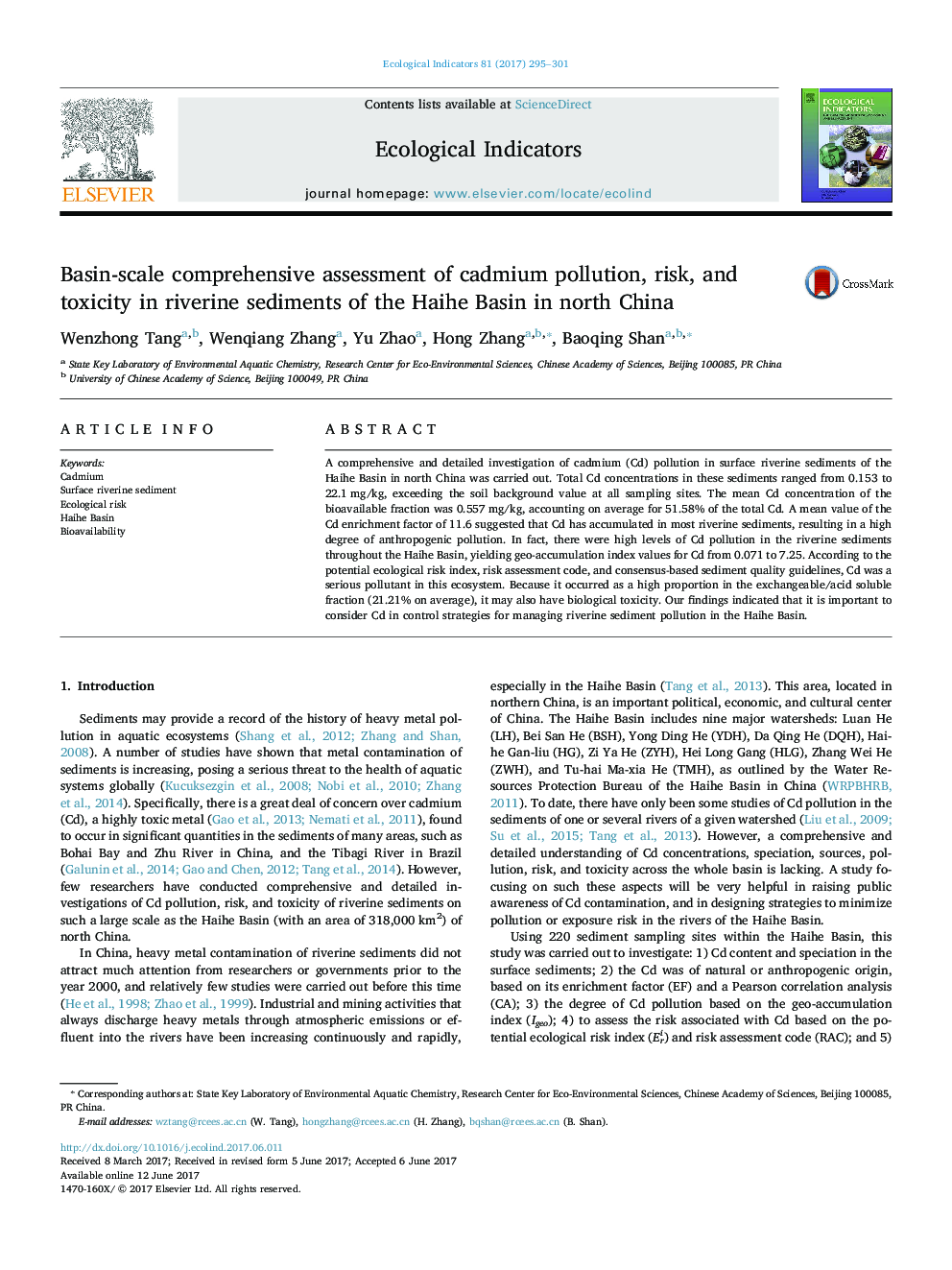| Article ID | Journal | Published Year | Pages | File Type |
|---|---|---|---|---|
| 5741434 | Ecological Indicators | 2017 | 7 Pages |
â¢Cd pollution was comprehensively studied in riverine sediments of the Haihe Basin.â¢Cd was anthropogenically enriched in most riverine sediment samples.â¢Surface riverine sediments showed a high degree of Cd pollution.â¢Highly bioavailable Cd posed a high ecological risk in these riverine sediments.â¢Cd may have biological toxicity in the riverine sediments of the Haihe Basin.
A comprehensive and detailed investigation of cadmium (Cd) pollution in surface riverine sediments of the Haihe Basin in north China was carried out. Total Cd concentrations in these sediments ranged from 0.153 to 22.1Â mg/kg, exceeding the soil background value at all sampling sites. The mean Cd concentration of the bioavailable fraction was 0.557Â mg/kg, accounting on average for 51.58% of the total Cd. A mean value of the Cd enrichment factor of 11.6 suggested that Cd has accumulated in most riverine sediments, resulting in a high degree of anthropogenic pollution. In fact, there were high levels of Cd pollution in the riverine sediments throughout the Haihe Basin, yielding geo-accumulation index values for Cd from 0.071 to 7.25. According to the potential ecological risk index, risk assessment code, and consensus-based sediment quality guidelines, Cd was a serious pollutant in this ecosystem. Because it occurred as a high proportion in the exchangeable/acid soluble fraction (21.21% on average), it may also have biological toxicity. Our findings indicated that it is important to consider Cd in control strategies for managing riverine sediment pollution in the Haihe Basin.
